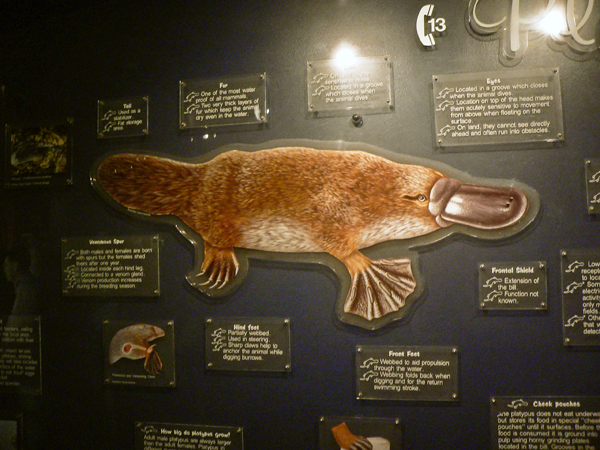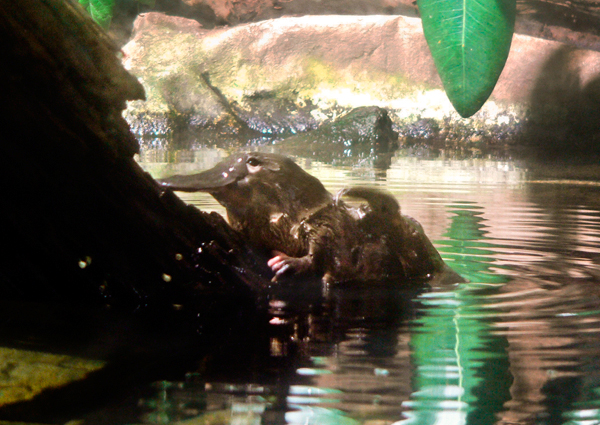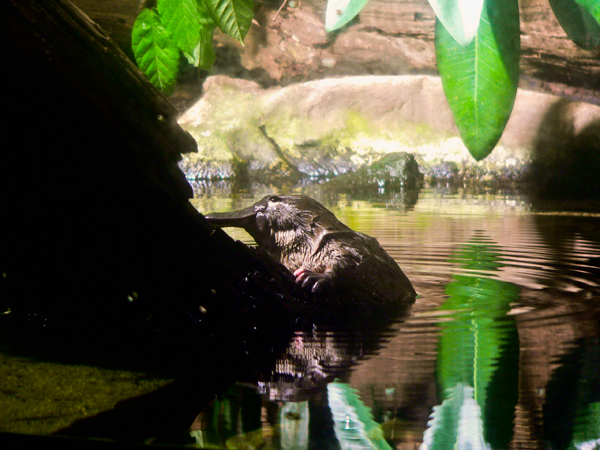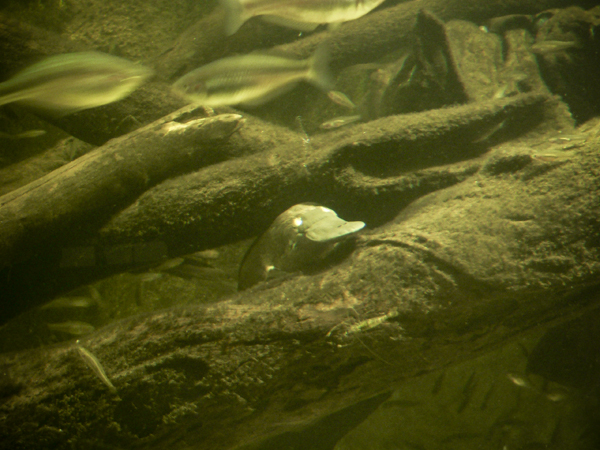Published in the Ocean Watch column, Honolulu Star-Advertiser © Susan Scott
May 16, 2008
A biologist friend asked me if I’d ever written about platypuses. “Written about them?” I said. “I don’t even know what they are.”
That wasn’t entirely true, but these Australian natives are so unusual that even though I’ve read about them time and again, the facts still escape me.
I don’t feel embarrassed by that, though. Eighteenth-century scientists didn’t believe platypuses existed even when holding one in their hands. When a platypus skin arrived in England in 1798, biologists thought some joker had sewn a duck’s bill, a beaver’s tail and four webbed feet onto a rabbit’s body.
When the third specimen arrived in 1800 looking the same, Sir Joseph Banks, Captain Cook’s naturalist, stopped the questioning. “Suspicions,” he declared about the existence of the platypus, “are now completely dissipated.”

But the platypus’s looks are just the beginning of this aquatic animal’s oddness. The platypus is one of only two mammals on Earth that lay eggs. The other is the echidna, another Australian native.
After sealing herself inside a self-made riverbank burrow, the female platypus incubates her one to three thumbnail-size eggs between her tail and body. Ten days later, the eggs hatch and the tiny babies nurse at their mother’s mammary glands.
These moms, however, have no nipples. The youngsters, called puggles, suck on the fur of the female’s belly, beneath which lie milk glands.
The bill of the platypus is supersensitive, detecting electric current produced by animals’ muscle activity. When the platypus dives, it moves its bill side to side two to three times per second to find worms, shrimp and other small animals on the river bottom.
When the platypus finds prey, it snaps it up, storing the meal in cheek pouches. When these are full, the creature swims to the surface and floats spread-eagled while grinding up the stored food with ridges inside the bill.
These animals have no teeth, but you don’t want to mess with the males. They have poisonous barbs on the heels of their rear feet and can deliver a painful sting when threatened.
Thick, luxurious fur covers platypuses’ otterlike bodies, a quality that led to the slaughter of millions by Aborigines and European settlers. Today, platypuses are protected by law.

Since the creatures are shy and hunt at night, platypuses seem to be rare. They are not. In the Australian wildlife system, platypuses are considered secure. They are, however, still vulnerable to human activity, because they need clean, healthy rivers, lakes and streams to survive.
I thought platypuses also inhabited estuaries, but they live only in fresh water.
I’ve been lucky to see several platypuses in the wild during my Australia visits. They’re small, 20 inches long including tail, weigh 2 to 5 pounds and look like a crazy quilt of otter, beaver and duck.

Researchers are interested in platypuses, because they hold clues to the evolutionary link between reptiles and mammals. Last week an international team of scientists announced the first decoding of the platypus genome, a breakthrough in the study of the creature’s origins.
Now that I’ve written about platypuses, I’m hoping I’ll remember the weird and wonderful details of their lives. But if not, I have a column to read to remind me.
 *All photos taken at the Sydney Aquarium by Susan Scott
*All photos taken at the Sydney Aquarium by Susan Scott